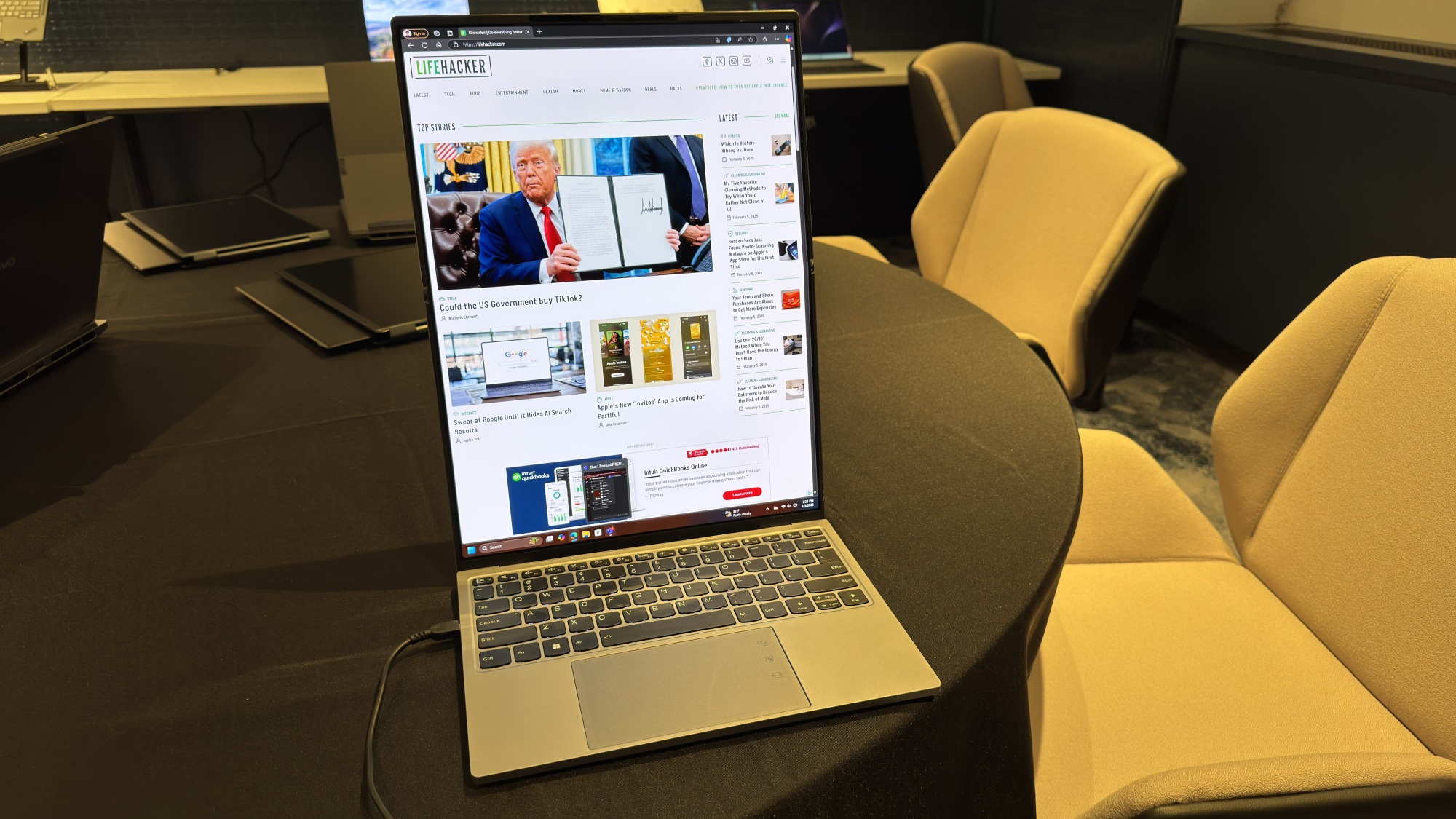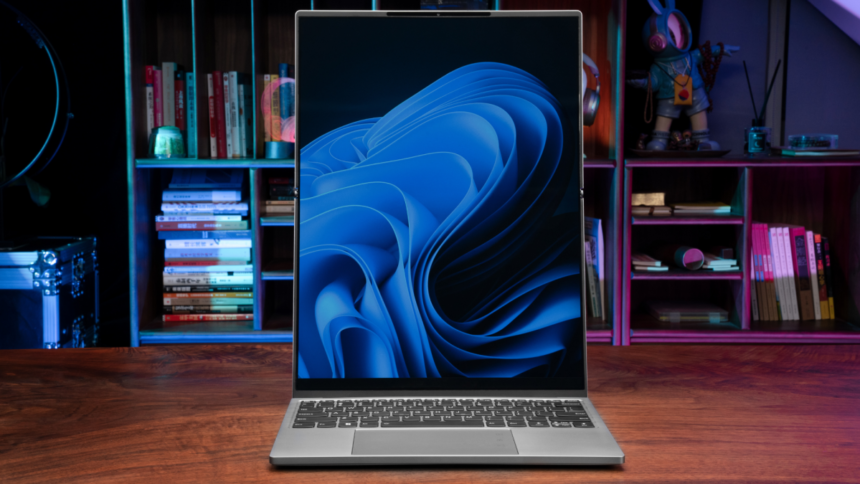Innovative Tech Concepts Unveiled at Lenovo’s MWC Event
Tech prototypes consistently pique the interest of journalists, breaking the cycle of conventional updates that often dominate the news cycle. While these innovations offer a glimpse into the future, their inherent uncertainty looms; many never make it to store shelves. Thus, reporting on such projects presents a unique challenge: it’s tough to gauge how much focus should be placed on products that may never reach consumer hands. Fortunately, during CES this year, Lenovo upheld one of its commitments by unveiling a rollable laptop, slated for 2025. At Mobile World Congress, they are rolling out three equally intriguing concepts.
A Foldable Take on the Rollable Display

Taking a more budget-friendly approach is the ThinkBook Flip AI PC, featuring a design similar to the rollable laptop showcased at CES. Rather than a screen that rolls out, this laptop has a display that folds over and extends across the device’s top section, accommodating both sides of the lid. Users can unfold the screen for an elongated vertical setup or duplicate their display onto the back for easy presentations. Alternatively, this sleek device can be utilized in a tablet-like format even when closed. While it resembles existing models, such as the Yoga Book 9i, it boasts a seamless screen with an integrated keyboard.

This design choice does come with its pros and cons. The absence of a rolling mechanism means the Flip AI PC can be slightly taller compared to its rollable counterpart, yet it also results in a device that feels more cumbersome at the top. Consequently, using the fully extended screen at acute angles may require additional support for stability.
Snap-On Display Enhancements

The innovation doesn’t stop there; Lenovo introduced the Magic Bay Dual Display and the 2nd Display laptop accessories. Although this isn’t the first iteration of Magic Bay, it showcases more complex functionality than previous efforts. Previous concepts have included additional displays, and this year’s models expand on that vision.
Starting with a compact approach, the Magic Bay 2nd Display features an 8-inch vertical screen that acts as a supplementary device for laptops, resembling a tablet without the touch capability. This design echoes Lenovo’s previous offering displayed at last year’s CES, reminiscent of a certain desktop setup. While its utility is clear—complete with an adjustable hinge—the allure of the Magic Bay’s more advanced display takes precedence.

The Magic Bay Dual Display transforms a regular laptop into a three-screen workstation, featuring two additional 13.3-inch displays on either side, both sporting a swift 120Hz refresh rate. Although it weighs 2.6 pounds, its integrated kickstand offsets this bulk. Similar concepts have appeared in the past; however, the streamlined connectivity of this device appears distinctly user-friendly compared to other existing options.
A Solar-Powered Laptop

In a move toward sustainability, Lenovo introduced an experimental solar-powered laptop, the Yoga Solar PC. This device features a solar panel embedded in the lid that reportedly boasts a “more than 24% solar energy conversion rate,” enabling it to recharge sufficiently for an hour of video playback with just 20 minutes of direct sunlight. Although visibility was limited during the reveal, its sleek design gives no hint of added bulk, as specs claim a thickness of only 0.6 inches and a weight of 2.69 pounds. For those looking for even more compact solutions, they also unveiled the Solar Power Kit for Yoga, a traditional battery pack paired with a detachable USB-C solar panel (not displayed in person).

Advancements on Previous Projects

While many of these concepts were on display, Lenovo also revealed several enhancements of their previously showcased technologies and is developing their own versions to compete in the market. This includes a glasses-free 3D ThinkBook, akin to models already available from Asus and Acer, as well as an AI-driven robotic assistant named Tiko that attaches to laptops using the Magic Bay interface.
For added capabilities, a Tiko Pro variant is underway, featuring a compact horizontal Magic Bay display that merges the functionality of the 2nd Display with various AI utilities. While similar renderings have appeared previously from competitors or in earlier Lenovo showcases, these developments remain noteworthy.
A more compelling offering is the Hybrid Dimensional 24-Inch Curved Monitor, advertised as capable of displaying 3D graphics concurrently with 2D content without compromising resolution. However, firsthand experience with this display is essential for accurate evaluation; thus far, no direct interaction has taken place.
Introducing AI Capabilities to Traditional PCs

Lenovo is also investigating solutions to integrate AI into traditional PCs. Their concept involves two specialized neural processing units (NPUs) that can connect to existing systems through either a USB stick or a display unit. Acting as an external graphics processor, the Lenovo AI Stick houses a powerful 32TOPS NPU that can connect to PCs lacking an NPU via Thunderbolt, allowing them to run large language models and AI graphics applications directly. It can operate using only the laptop’s power supply, though enhanced performance is achievable by connecting it to an outlet simultaneously.
Additionally, the AI Display, which features an embedded NPU, offers similar functionalities but is integrated directly into the monitor. This innovation allows the display to adjust its orientation and elevation in response to user movements. However, similar to most monitors, it necessitates a constant wall connection. Lenovo is also exploring an “AI Ring” designed for gesture control in spatial computing applications, although further details remain undisclosed.












